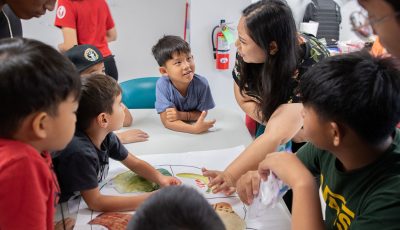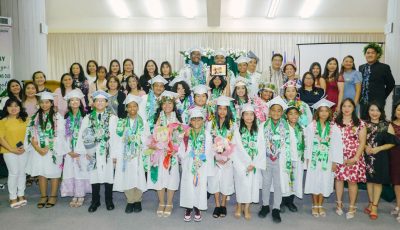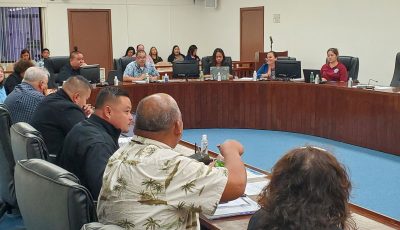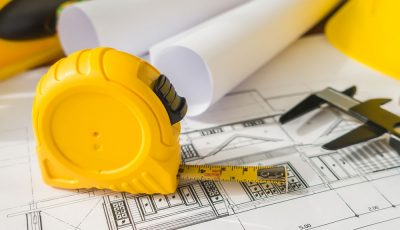Vote ‘yes’ to HLI 18-12 for repairs, renovation, modernization of public schools
As the Public School System continues to search for new and improved ways of meeting the need of student and classroom learning, it is also challenged in securing for resources needed for the repair, renovation and modernization of its facilities.
Spread throughout Saipan, Tinian and Rota, the PSS has a total of 19 campuses that were built between the late 1940s and, with the most recent, in 2002. This indicates that these facilities are between 12 and 68 years old— a state that the federal government considered obsolete or are threatened with disrepair unless immediate upkeep and renovations are initiated.
One of the primary intent of House Legislative Initiative 18-12 is to ensure proper maintenance, repair, and renovation of the school district’s campuses and facilities. From buildings to classrooms, cafeterias to libraries, and offices, among others, these facilities are used daily of the Commonwealth’s more than 10,000 students and close to a thousand staff and personnel.
The overall intent of H.L.I. 18-12 is to increase the 29-year-old constitutional funding level of 15 percent to 25 percent.
And yet maintenance problems have become a continued struggle for decades now. As revealed by a federal assessment, its “deferred maintenance”—postponement measure of repairs and renovation—add up to a costly and complex problem of maintaining the structural integrity of all public school facilities in the CNMI. Further delaying any plans exposes public school students, staff and personnel, and the community to safety and security danger.
With H.L.I. 18-12, PSS would be able to sustain its periodic and regular maintenance of its facilities.
H.L.I. 18-12 will be on the ballot this November and public education leaders, supporters, and advocates are urging community’s support.
“Our continued investment in public education includes the safety of our stakeholders and one important and critical aspect is ensuring the structural integrity and soundness of our facilities,” Education Commissioner Dr. Rita A. Sablan explained.
“In other words, our ongoing work to repair and rehabilitate our school buildings depend largely with the availability of [guaranteed] funding to sustain our work,” Sablan added.
Throughout the years, PSS’ funding level hovers between 18 to 24 percent of government sources for appropriation, a strong indicator that the current 15 percent no longer matches today’s cost of delivering public education.
‘Absorbed cost’
A December 2013 Assessment of Buildings and Classrooms or the ABC initiative-report released the Office of Insular Affairs revealed that the PSS has absorbed an estimated of $11.3 million worth of deferred maintenance.
“[These are] for PSS facilities’ repairs and renovations that were put on hold, repairs that are neglected and preventative maintenance that continually been ignored due to lack of funding,” OIA said of its findings.
OIA has commissioned the U.S. Army Corps of Engineers to conduct the assessment of the PSS’ classrooms and facilities, along with other school districts within the insular area.
“Further delay of the plan adds up to a costly and complex problem of maintaining the structural integrity of [your] school facilities,” the federal findings further revealed.
The federal agency’s findings were further bolstered by one of the conclusions of AdvancED’s accreditation report. Although PSS received high marks in three areas, the global accreditation giant recommended that the school district “must work toward improving” two areas of quality standards: resources and support system and using results for continuous improvement.
AdvancED’s North Central Association-Commission on Accreditation and School Improvement disclosed that PSS must do something to improve the resources and provide for services in all schools to support its purpose and direction.
These resources ranged from maintaining facilities, services, and equipment to provide for a safe, clean and healthy environment for all students and staff.
In the last 14 years, the school district has struggled with its commitment to keep the balance between its focus of student learning and success and the growing cost of public education.
“We are thankful for the support that we continuously receive from our elected leaders as we go about our plans and initiatives in ensuring that we have uninterrupted delivery of public education to the children of this Commonwealth,” the education chief noted.
The most-recent building construction for the PSS were the five public schools that were built by the turn of the 21st century: Kagman Elementary School (2000), Sinapalo Elementary School (2001) and Chacha Oceanview Middle School, Saipan Southern High School and Kagman High School in 2002.
William S. Reyes Elementary School and Hopwood Junior High School were built in the 1940s; GTC Elementary School, Tinian Elementary School and Oleai Elementary School were built in the 1950s. In the 1960s, four schools were constructed: Garapan Elementary School, Tanapag Elementary School, San Antonio Elementary School (now middle school), and Marianas High School.
By the 1970s, San Vicente Elementary School was built.
Between 1980s and 1990s, four schools were added by PSS. They are Dr. Rita H. Inos Jr. Sr. High School, Koblerville Elementary School, Tinian Jr. Sr. High School, and Dandan Elementary School (now middle school).
However, since 2000 there were no new buildings or facilities that were newly built except for basic repairs and safety maintenance and renovation that have periodically been implemented. But recently, due to the dwindling of government resources, these initiatives have been threatened with delay. (PSS)



























